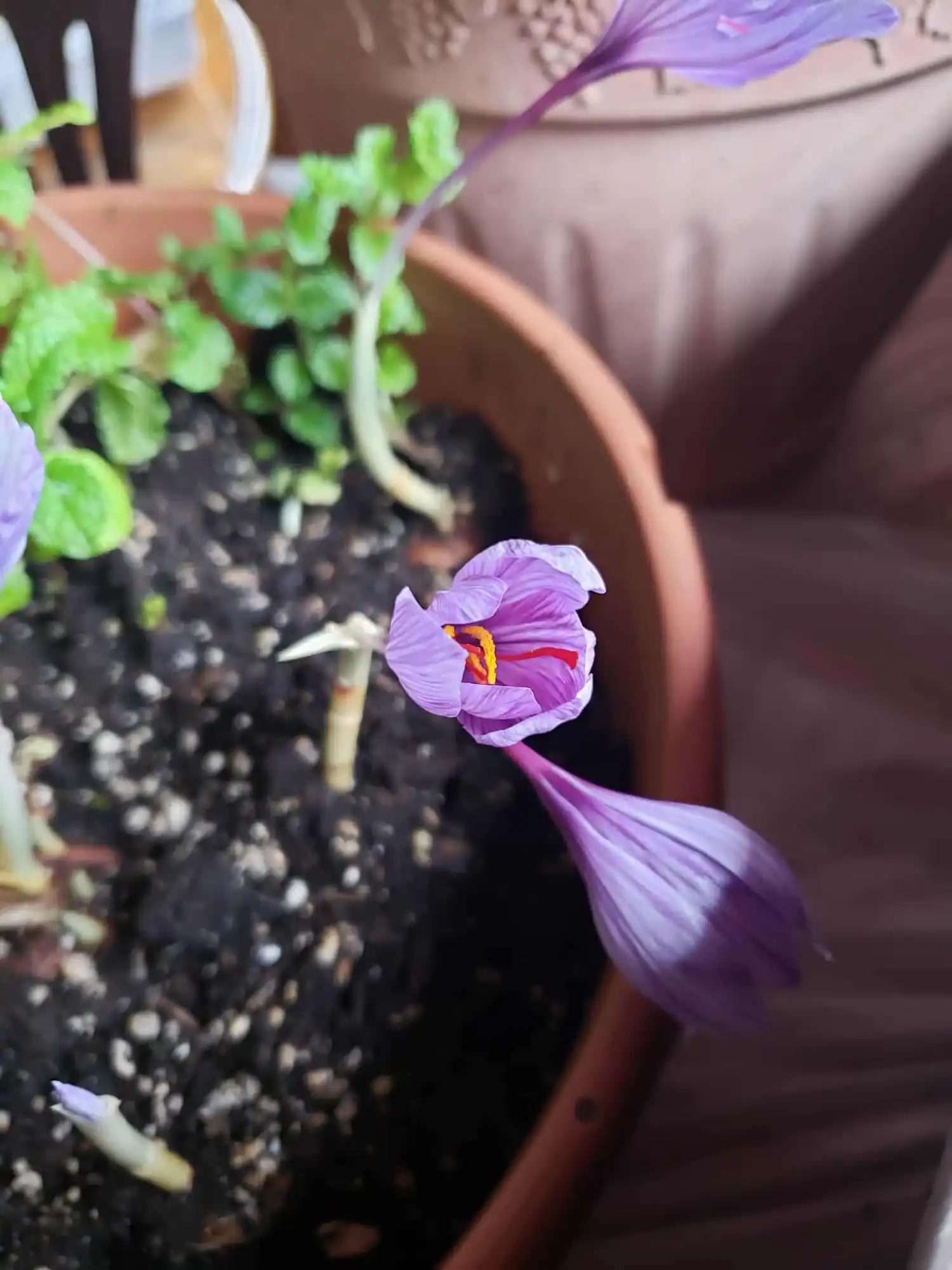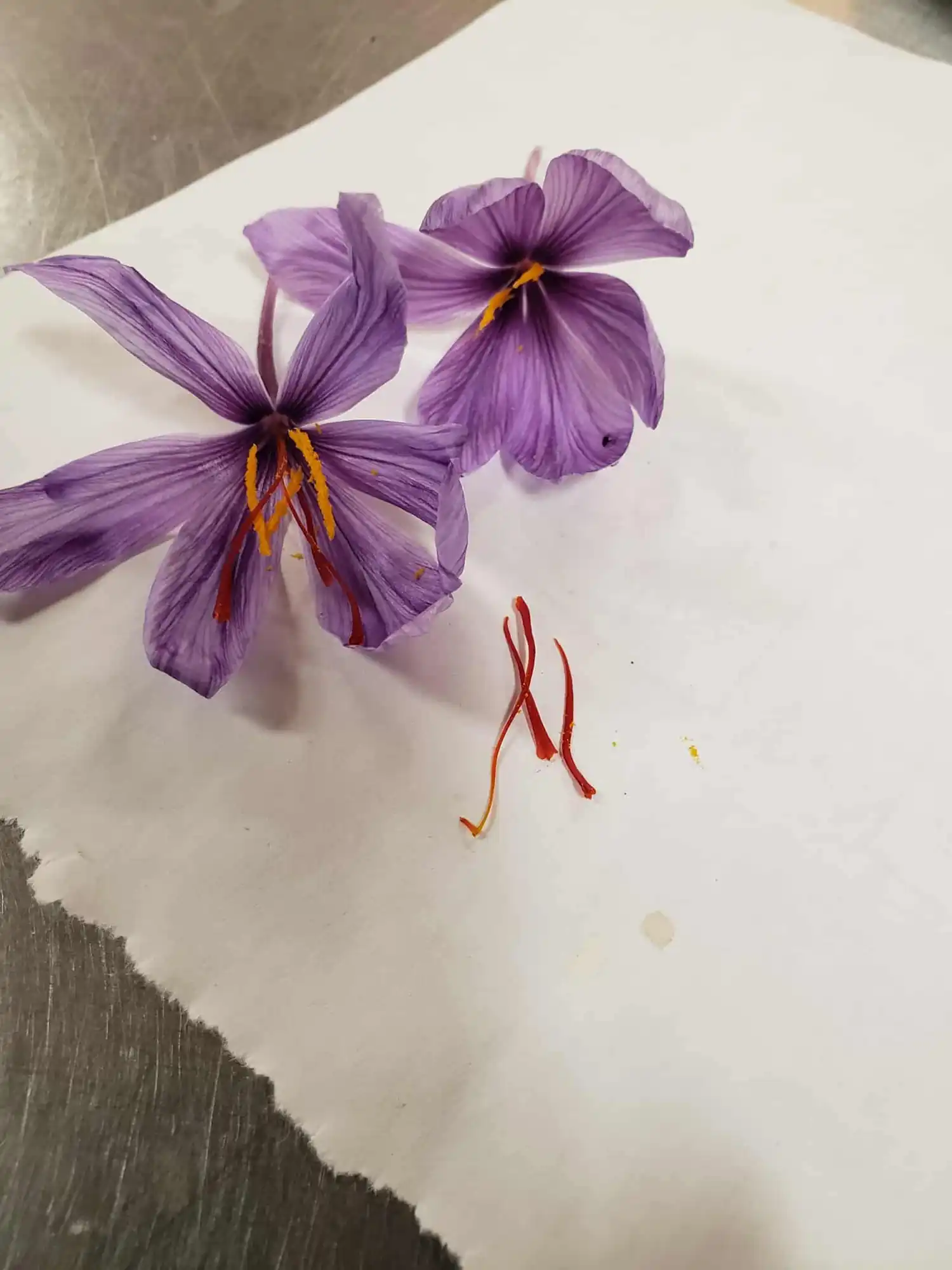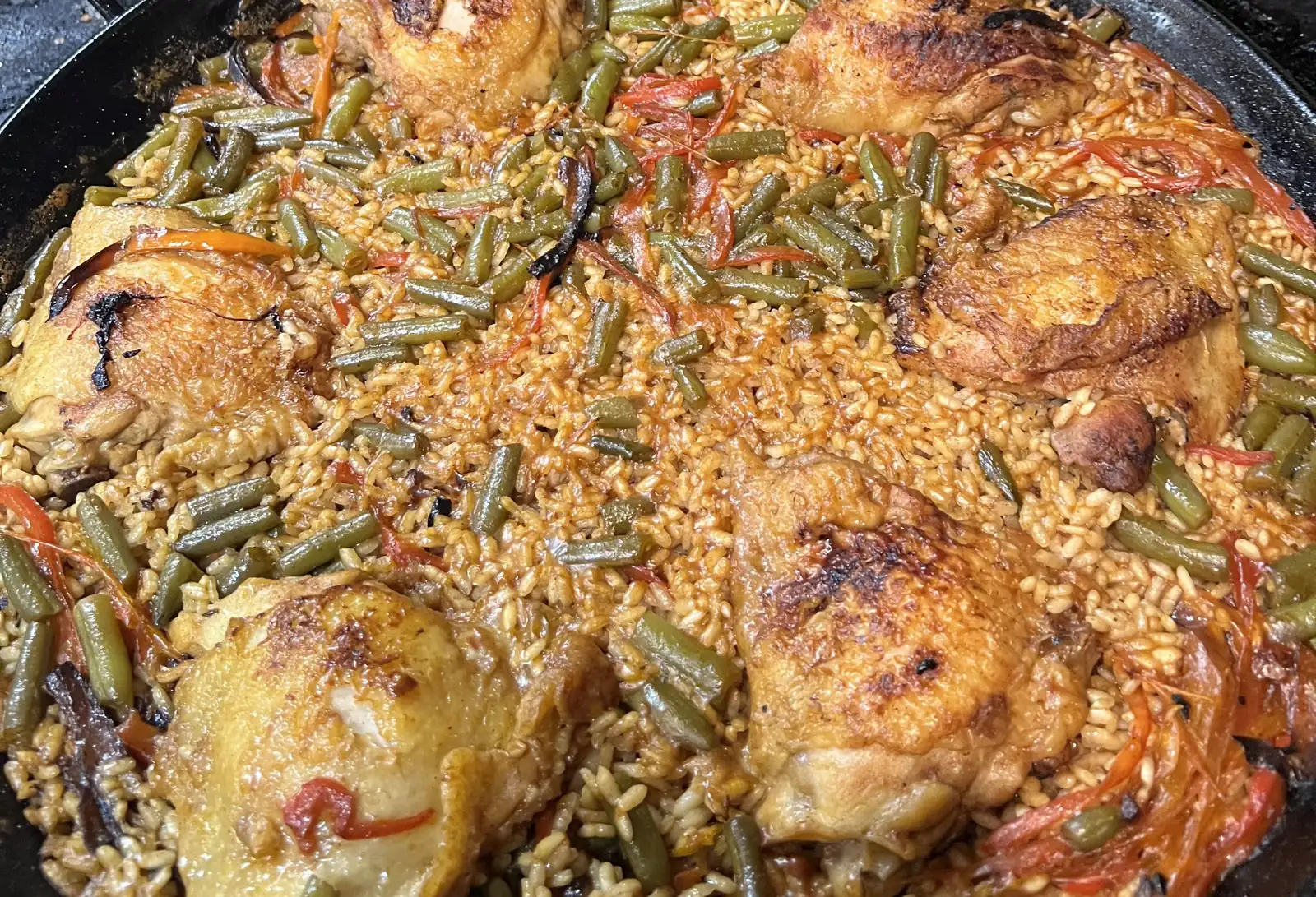Editor's note
If you’ve been following our recent photos, you’ve probably spotted the delicate purple flowers I have been growing – yes, that really is saffron growing here at Lake Clear Lodge!
Most people are surprised that saffron, the world’s most treasured spice, can grow this far north. But it can — and it’s a beautiful reminder that sometimes the rarest things thrive in quiet places. While at the moment they are inside, you can plant them earlier in the year outside as well.
Here’s a look at why this little flower is so special, how we’re growing it at the Lodge, and how you can use it in your own kitchen.
What Makes Saffron So Unique?
Saffron comes from a fall-blooming crocus (Crocus sativus). Each flower produces only three bright red threads, which explains why saffron is famous for being the most valuable spice in the world.

But beyond the price tag, saffron has a long culinary history:
- It adds a warm, golden hue to dishes
- Its flavor is earthy, floral, and slightly honeyed
- A little goes a very long way
Saffron is used in cuisines across the Mediterranean, Middle East, parts of Europe, and in our Adirondack kitchen as well!
Can Saffron Really Grow in the Adirondacks?
Yes — and it’s surprisingly easy once you understand its rhythm.
Planting
Saffron is grown from corms (bulbs) planted in late summer.
Soil
They prefer loose, well-drained soil–think “no soggy feet.”
Sun
Full sun helps the flowers develop their deep color and flavor.
Bloom Time
They bloom in the fall, just as the rest of the garden begins to fade. It’s a lovely burst of color when everything else is turning brown and gold.
Harvesting
Each flower must be picked by hand, and the three red stigmas carefully plucked and dried, but you don’t need a huge crop. Even a small handful of blossoms gives you enough saffron for several recipes!

How We Use Saffron in the Lodge Kitchen
Saffron brings a gentle warmth and color that pairs beautifully with traditional, slow-food style cooking. As I’ve been growing it, here are a couple of the ways that we’ve enjoyed trying it:
Saffron Rice
Just a thread or two gives rice a gorgeous golden hue and light floral aroma.
Saffron Broth
Perfect in winter soups or as a base for seafood dishes (like our Adirondack Fish Bouillabaisse).
Golden Milk
Warm milk (or your favorite alternative) infused with saffron and a touch of honey, this is a soothing drink for those cold winter evenings!
Saffron Butter
Stir a pinch of crushed saffron into soft butter for a beautiful finishing touch on vegetables or fish.
Paella & Mediterranean Dishes

Saffron is essential for classic paella, risotto Milanese, and many Persian rice dishes. We just had the wonderful experience of having traditional Paella when a Spanish family was visiting us–including getting to keep the special Paella pan!
If you visited us this summer, you also may have caught it in our Honey Baked Pear dessert. These pears were poached in honey, triple sec, and yup–you guessed it–saffron, adding a lovely floral note to the sauce when served.
Tips for Cooking With Saffron
Here are a few simple rules I’ve been following to make the most of our Adirondack saffron:
- Don’t use too much. A couple of threads is enough for most dishes.
- Bloom the saffron first. Soak in warm water, broth, or milk for 10–15 minutes before adding to a recipe.
- Store it well. Keep dried saffron in an airtight jar away from direct light.
- Be patient. Saffron unfolds slowly and rewards gentle cooking.
A Note on Saffron from Nutritional Energetics
For those of you who know me, you know I enjoy cooking, but also learning about the nutritional and energetic properties of what I’m making! Saffron has been appreciated for centuries not just for its flavor, but also for its gentle support of overall well-being. It’s especially known for its connection to eye comfort and visual health, thanks to its naturally bright pigments and antioxidant qualities that help nourish the visual system.
From the deeper perspective of my energetic work, saffron carries the signature of clarity and inner light. It’s a tiny thread of brightness that supports both how we see the world and how we feel within it. Its golden color mirrors this quality, reminding us that even small amounts of “everyday light” can have a meaningful effect.
A Small Flower That Brings a Lot of Joy
Growing saffron here at the Lodge has become one of those simple pleasures that reminds us why we love slow food and seasonal living. It’s quiet, beautiful, and offers a flavor that feels both ancient and comforting.
And yes–we’ll be growing it again next year!
If you’d like a few tips for starting your own saffron patch at home, or if you’d like a recipe using our homegrown threads, just let us know… we’re always happy to share what we learn along the way!
Stay Nourished Everyone,
Chef Cathy



